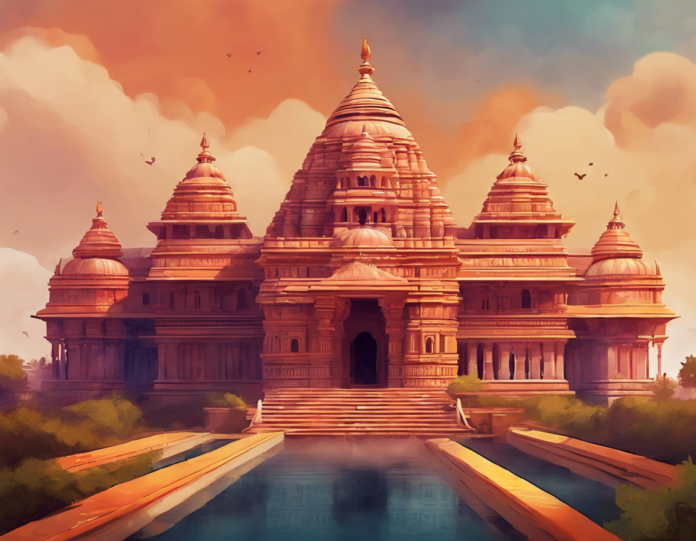Ram Mandir: A Divine Symbol of Indian Culture and Architecture
Introduction
The Ram Mandir, also known as the Ram Janmabhoomi Temple, holds profound cultural and spiritual significance in India. Located in Ayodhya, Uttar Pradesh, this magnificently designed temple is dedicated to Lord Ram, believed to be the seventh avatar of the Hindu deity Vishnu. The temple is built at the site where many Hindus believe Lord Ram was born.
History and Significance
The history of the Ram Mandir is deeply intertwined with the centuries-old Ayodhya dispute, a socio-political issue that centered around the claim of the Hindus that the Babri Masjid was constructed after destroying a Hindu temple that marked the birthplace of Lord Ram. The dispute came to a resolution in 2019 when the Supreme Court of India ruled in favor of building a temple at the site, leading to the construction of the magnificent Ram Mandir we see today.
Architecture and Design
The architecture of the Ram Mandir is a stunning blend of traditional Indian temple architecture and modern engineering. The temple complex is built in the Nagara style of Hindu temple architecture, characterized by its soaring shikhara or spire. The intricate carvings and sculptures adorning the temple walls depict scenes from the Ramayana, the epic tale of Lord Ram’s life.
Visiting the Ram Mandir
Visiting the Ram Mandir is a soul-stirring experience for devotees and tourists alike. The tranquil atmosphere of the temple complex, combined with the melodious chants of hymns and the fragrance of incense, creates a sense of serenity and spiritual upliftment. The temple is open to people of all faiths, promoting harmony and unity among diverse communities.
Frequently Asked Questions (FAQs)
1. When was the Ram Mandir constructed?
The construction of the Ram Mandir began in 2020 after the groundbreaking ceremony performed by Indian Prime Minister Narendra Modi.
2. How long did it take to build the Ram Mandir?
The construction of the Ram Mandir is expected to be completed in a span of 3-4 years, making it one of the fastest-built temples in India.
3. Can non-Hindus visit the Ram Mandir?
Yes, the Ram Mandir is open to people of all faiths and beliefs. Visitors are requested to adhere to the temple’s guidelines and maintain the sanctity of the place.
4. Are there any entry fees for visiting the Ram Mandir?
No, there are no entry fees for visiting the Ram Mandir. However, donations for the temple’s maintenance and development are accepted.
5. What are the timings for visiting the Ram Mandir?
The temple is open for devotees and visitors from early morning till late evening. Specific timings may vary, so it is advisable to check the temple’s official website for updated information.
Conclusion
The Ram Mandir stands as a testament to India’s rich cultural heritage and spiritual legacy. Its serene ambiance, awe-inspiring architecture, and profound symbolism make it a must-visit destination for anyone seeking a glimpse into the country’s spiritual tapestry. Visiting the Ram Mandir is not just a journey of sightseeing but a journey of the soul, a chance to connect with the divine and experience the beauty of faith in all its glory.








